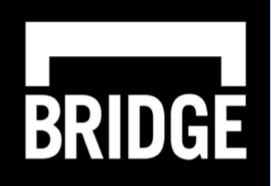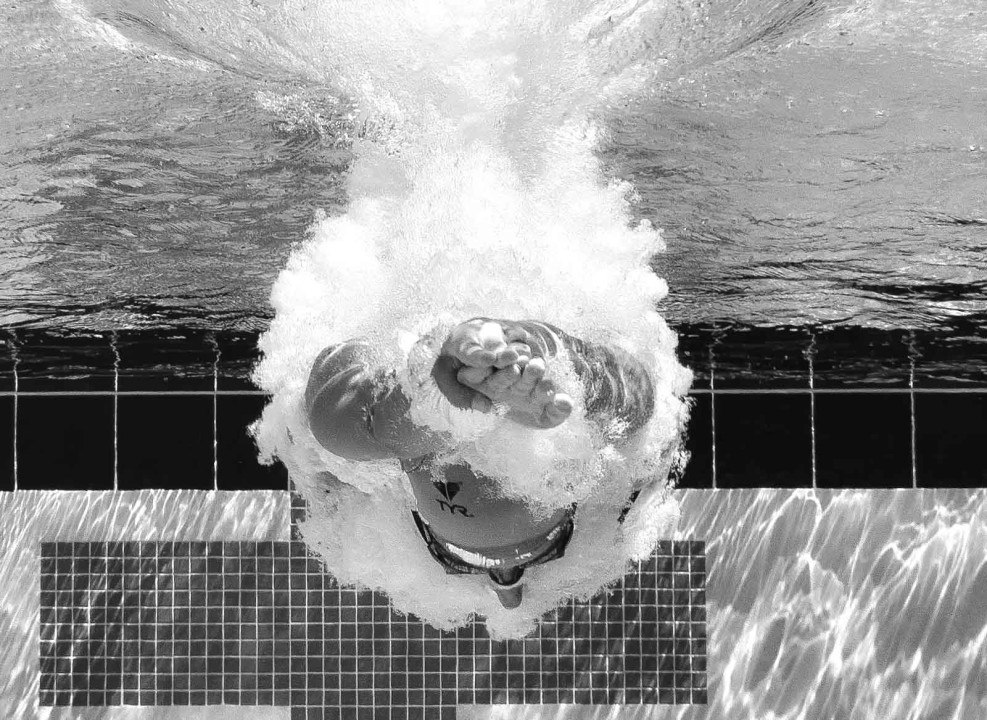The BridgeAthletic Building Block Series is a set of 5 exercises that can be performed by swimmers of all levels on the pooldeck. This Building Block Series requires a kettlebell (KB). KB weight selection is important. At Bridge, we recommend starting lighter and perfecting the technique before moving up in weight. Many KBs are coordinated in weight by color – make sure that the color matches your skill level and experience.
1. KB Goblet Squat
Level: Intermediate to Advanced
Movement: Start with feet shoulder-width apart, toes rotated out slightly. Hold the KB with both hands at the sternum, elbows down. Squat down slowly, keeping your chest up and back flat. Work on touching your elbows to the inside of your knees, keeping your hips low. Return to the start position and repeat for prescribed reps.
Bridge tip – Push your knees out as you squat down to open up your hips and groin for increased depth.
2. 1-Leg KB SLDL -2- Press
Level: All
Movement:
This is taking the MB RDL, one step further. The 1-Leg KB SLDL -2- Press adds a degree of difficulty adding the arm movement while performing a single-leg exercise. Start with the KB in the opposite hand to the leg you are standing on. Keeping your back flat, hinge at the hips and take your right hand with the KB to the outside of your left foot. Keeping your balance, reverse the movement and return to the start position. As you return to this position, bring your knee up to 90-degrees, pressing the KB toward the ceiling. Pause at full arm extension with the same-side knee at a 90-degree hold.
Repeat for prescribed reps. Switch legs and repeat for the other leg.
Bridge tip – Aim to keep perfect balance through all of your reps. Once you have the balance nailed down, work on range of motion, and only then with these two mastered, progress in weight.
3. 1-KB Stepup
Level: Intermediate to Advanced
Movement:
This is a great exercise for single leg stability and mid-section strength transfer.
Set up a low box. Hold a KB in your right hand resting on your right shoulder. Starting behind the box, step on to the box with your left foot. Place your entire foot on the box and drive through your left foot to bring your right knee up to 90 degrees. Pause. Step down slowly from the box. Repeat for the prescribed reps on your left leg. Switch the KB to your left hand and repeat with your right leg.
Bridge tip – The focus is on the quality of the movement, especially the leg that is stepping on to the box, not how much weight you can hold.
4. KB Swing
Level: All
Movement: The KB Swing is a useful method to work on coordination and finesse. Too often athletes force the start of the swing movement, and either injure themselves over time or progress very slowly. Coordination and finesse will lead to greater athletic results and progressions.
Start with your feet shoulder-width apart, holding the KB with both hands in front of you. Hinge at the hips to start with the KB below the knees. From this point swing your arms and KB up to shoulder height, extending at the hips. Pause. Return to the start position of the swing, controlling the KB on the way down. Avoid letting it just crashing down to this position.
Repeat for the prescribed reps or time. Foam roll your glutes and lower-back after this to aid in recovery.
Bridge tip – The focus is on the quality of the movement. The swing phase of the movement starts with the hip drive, not as an arm swing. Use your legs and hips to drive the swing.
5. 1-Arm KB Overhead Squat
Level: Intermediate to Advanced
Movement: Set up as you would to perform a squat. Hold a light KB in your right hand and press it overhead. Squat down slowly, keeping the KB stable overhead. At the bottom of the squat, pause, then return slowly to the start position. Keeping the KB overhead repeat for the prescribed reps, then switch the KB to your left and repeat on this side.
Bridge tip – This exercise requires a great deal of focus for each rep. Do not rush through it – take your time to master this equally for your right and left arm.
We hope you enjoy this full-body KB series.
#BBA #BridgeBuilt #BridgeStrong

About BridgeAthletic
 BridgeAthletic works with elite professional, collegiate, and club swimming programs to provide a turnkey solution for dryland training. Led by Nick Folker, the top swimming strength and conditioning coach in the world, our team builds stroke-specific, custom-optimized dryland programs for each of our clients. The individualized workouts are delivered directly to athletes via our state of the art technology platform and mobile applications. Check Nick and BridgeAthletic out as recently featured in SwimSwam.
BridgeAthletic works with elite professional, collegiate, and club swimming programs to provide a turnkey solution for dryland training. Led by Nick Folker, the top swimming strength and conditioning coach in the world, our team builds stroke-specific, custom-optimized dryland programs for each of our clients. The individualized workouts are delivered directly to athletes via our state of the art technology platform and mobile applications. Check Nick and BridgeAthletic out as recently featured in SwimSwam.
About Nick Folker
 Nick Folker is the Co-Founder and Director of Elite Performance at BridgeAthletic. Nick’s athletes have won 22 Olympic Medals, 7 team NCAA Championships and over 170 individual and relay NCAA championships. Megan Fischer-Colbrie works as the Sports Science Editor at BridgeAthletic. Megan was a four-year varsity swimmer at Stanford, where she recently graduated with a degree in Human Biology.
Nick Folker is the Co-Founder and Director of Elite Performance at BridgeAthletic. Nick’s athletes have won 22 Olympic Medals, 7 team NCAA Championships and over 170 individual and relay NCAA championships. Megan Fischer-Colbrie works as the Sports Science Editor at BridgeAthletic. Megan was a four-year varsity swimmer at Stanford, where she recently graduated with a degree in Human Biology.
The Championship Series by BridgeAthletic is designed to empower athletes with tips from the pros that will help them reach peak performance come race day. We will be covering competition-focused topics such as nutrition, recovery, stretching, and mental preparation.
Follow BridgeAthletic on Twitter here.
Like BridgeAthletic on Facebook here.
Follow BridgeAthletic on Instagram here.
Swimming Training is courtesy of BridgeAthletic, a SwimSwam ad partner.
